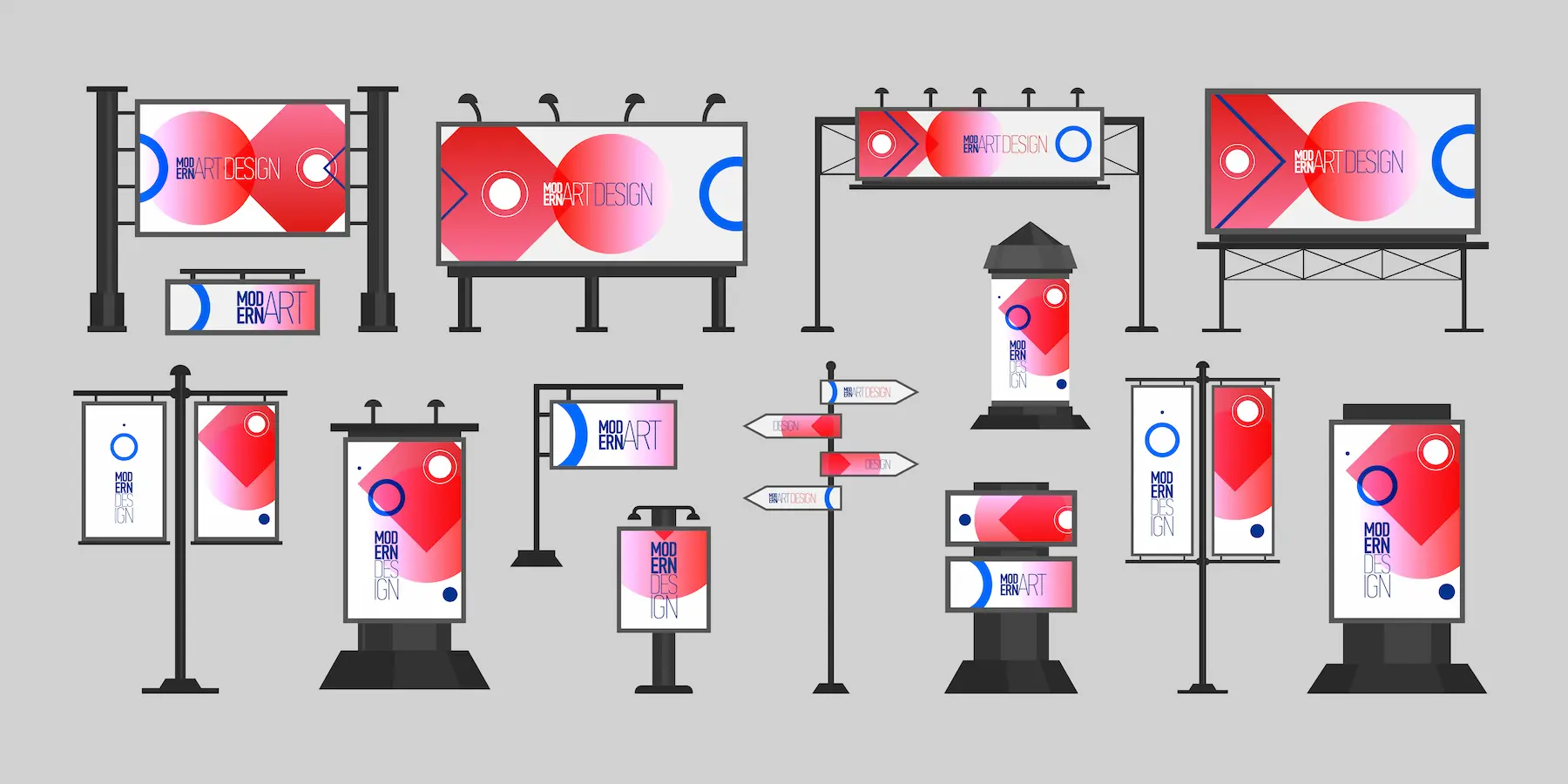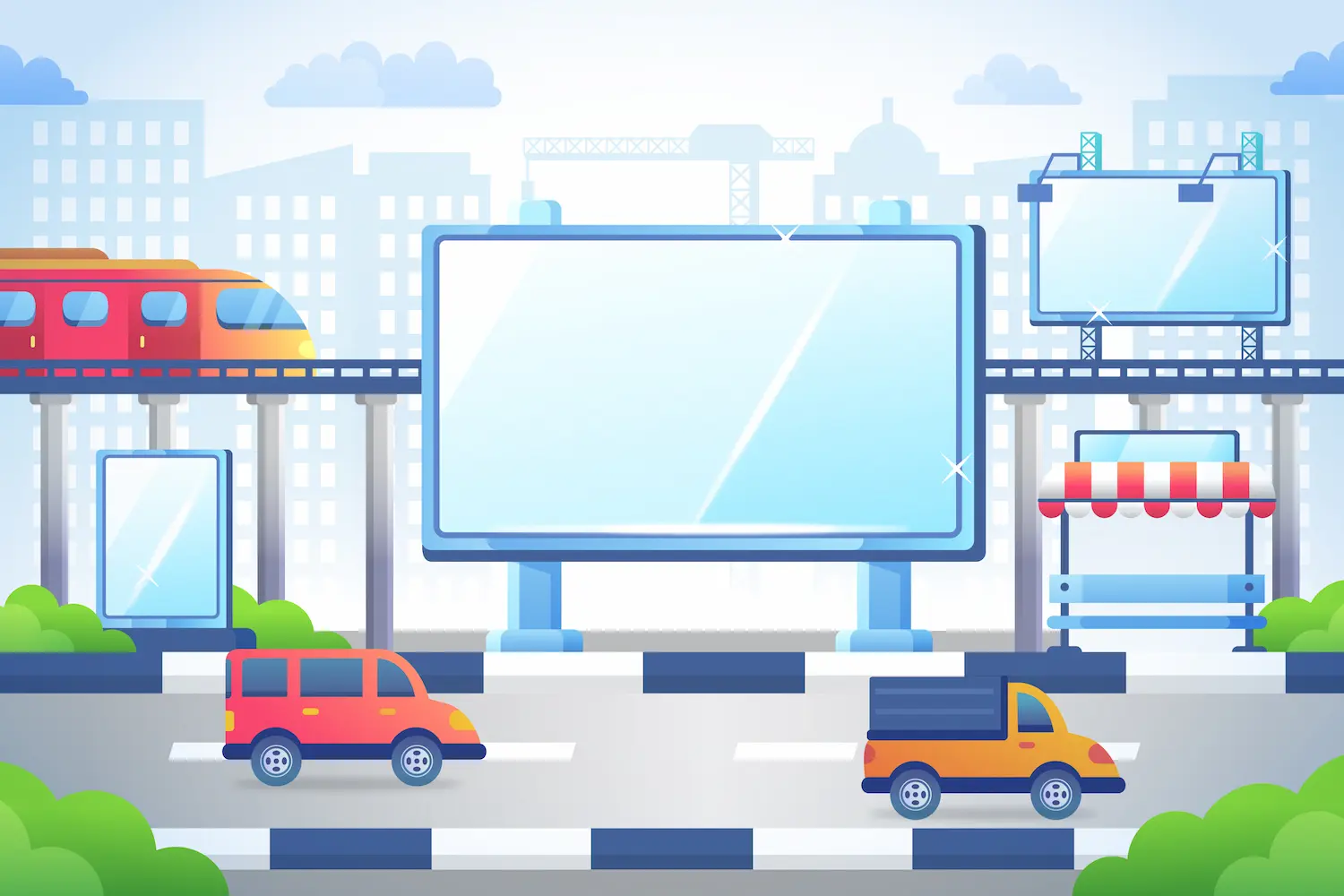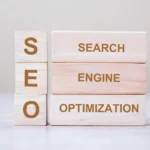Billboards
To broaden your advertising scope, think about stepping into the vast open air. Depending on your business’s market and message, you might not need to travel far—just to your nearby highways or city roads—to locate the perfect billboards to promote your business’s offerings.
Advertising through billboards can be beneficial for both small and local businesses and large consumer corporations. It can assist you in reaching potential clients, impressing existing customers, establishing your reputation as a thriving business, attracting prospective employees, and even bolstering your standing as a reliable borrower at your large financial institution.
Despite the recent public uproar over the surge of billboards and the ensuing limitations imposed by local authorities on the quantity and placement of these signs—or perhaps due to this—billboard advertising proves to be an effective method to expose your business’s name to potential customers and “pave the way” for the sales team’s approach.
The Institute of Outdoor Advertising states, “Outdoor advertising is perfect for launching products, inaugurating stores, or hosting promotional events where timing is crucial. It serves as a bridge between the in-home messages from other media and the out-of-home advertising.
Round-the-Clock Promotion
The major benefit of billboard advertising over radio, TV, direct mail, and newspaper advertising is that once your message is displayed, it remains visible 24/7. Potential customers can’t close their eyes while driving.
Billboards are typically available in two types: bulletins and poster panels. Bulletins are usually 14′ by 48′ and can be either painted or posted with preprinted paper. On the other hand, poster panels are smaller, measuring 12′ by 24′, and can hold either bleed posters or 30-sheet posters.
Billboard Varieties

Bulletins generally have a higher circulation than poster panels, as they are exclusively found on major roads. Conversely, poster panels are more widely spread and can reach a larger and quicker market. While bulletins are purchased on a per-unit basis, poster panels are bought by “showing,” which refers to the extent of coverage a set of poster panels provides in a market. The usual showing sizes are #100, 75, 50, and 25.
For instance, a #50 display results in 500,000 daily impressions in a market of one million individuals. A #25 display would reach 250,000 individuals in the identical market. On average, a #50 display will engage over 80 percent of all adults within a month, with more than half being reached in the initial week.
Furthermore, retailers gain advantages when manufacturers position outdoor advertisements near their shops. As a result, they might offer the manufacturer premium shelf placement and maintain a larger stock for the advertiser.
Significance of Location
Just like in real estate acquisition, location is the key element to ponder when buying billboard advertising. Would your billboard be more visible in the city or along a neighbouring freeway? Are you aiming for a high-end residential area or a business district? One unique benefit of outdoor advertising is its ability to provide more precisely targeted positioning compared to other mediums, as poster panels can be situated in communities with diverse ethnic origins and income brackets.
Selecting Billboard Locations
The primary clientele of any business are typically people who reside or are employed near their establishments. Therefore, it is important to select a location that is strategic for a highway billboard. Changing the locations monthly can be good for the broadest exposure possible.
Other crucial elements to take into account are reach (the number of individuals who pass by the advertisement) and frequency (the average number of opportunities an individual gets to see the advertisement within a specific timeframe).
The speed and quantity of traffic at the location, the height and size of the advertisement (those that “rise above the horizon” are more effective, as are bigger advertisements), the quantity of other advertisements in the vicinity (excessive clutter may reduce the visibility of your advertisement), and whether the ad is lit up to be noticeable late at night in busy areas.
Influence and Factors
Moreover, being close to a traffic light or crossroads can boost visibility. Although outdoor advertising firms will offer demographic and traffic flow data for different locations, common sense and personal experience serve as useful guides.
The CEO of a Connecticut-based firm selected his billboard location based on his personal experience as a commuter on a major highway near the company’s main office. “The billboard was quite large—approximately 24′ square—and situated just before the toll booths, where everyone was decelerating,” he explains. “It was impossible to ignore that sign.” Despite having to wait a year for the billboard to become available, the outcome justified the delay.
“That billboard and the advertising posters on commuter trains heading to New York City have probably garnered more attention than any other marketing effort I’ve undertaken in the past decade,” remarks the CEO of the $12 million company.










6 Responses